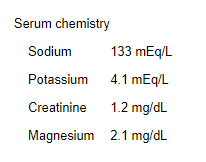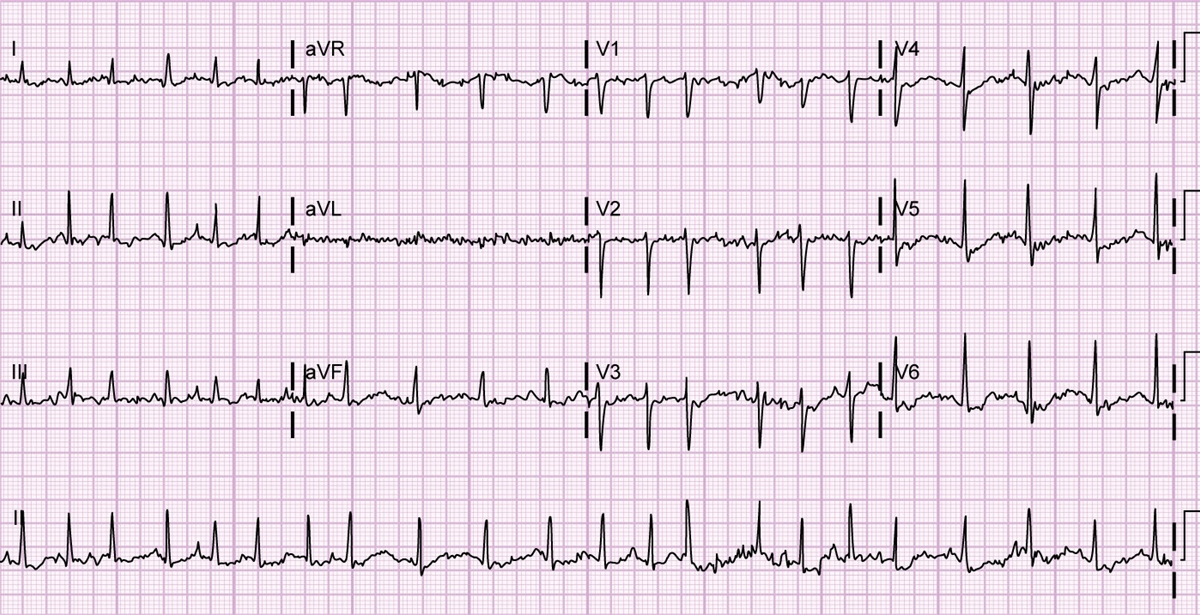A 72-year-old man is brought to the emergency department due to 3 days of worsening cough and shortness of breath. The cough is productive of a small amount of white sputum. The patient has no chest pain. He has a history of hypertension, gout, chronic obstructive pulmonary disease, and coronary artery disease for which he underwent coronary artery bypass grafting. He also had mitral valve repair 6 years ago. The patient has a 40-pack-year smoking history and continues to smoke a pack of cigarettes a day.
Blood pressure is 136/72 mm Hg, pulse is 132/min, and respirations are 26/min. Oxygen saturation is 92% on room air. The patient appears to be in moderate respiratory distress. Jugular venous pulse is difficult to measure due to use of accessory muscles. Lung auscultation shows decreased air entry in both lung fields. There is diffuse and scattered wheezing heard throughout the lung zones. Heart sounds are irregular with a faint holosystolic murmur heard over the cardiac apex. There is 1+ bilateral pitting ankle edema.
Laboratory results are as follows: ECG is shown in the exhibit.
ECG is shown in the exhibit. 
Which of the following is the best treatment for this patient's cardiac condition?
Definitions:
Interest Rates
The proportion of a loan that is charged as interest to the borrower, typically expressed as an annual percentage rate.
Beta
A measure of the volatility, or systematic risk, of a security or portfolio compared to the market as a whole.
Portfolio
A diverse collection of financial investments like stocks, bonds, commodities, and real estate held by an individual or an institutional investor.
Expected Return
The anticipated return on an investment, calculated based on the probabilities of various outcomes.
Q6: Point headings are a summary of the
Q8: The text recommends a four-step process for
Q14: The rule of law and facts of
Q16: Perform the operation. Do not use negative
Q27: A cubical box has a volume of
Q39: Solve the equation. Check all solutions. <img
Q61: A 56-year-old man comes to the physician
Q73: A 76-year-old man is brought to the
Q156: A 54-year-old man comes to the emergency
Q779: A 78-year-old man comes to the office